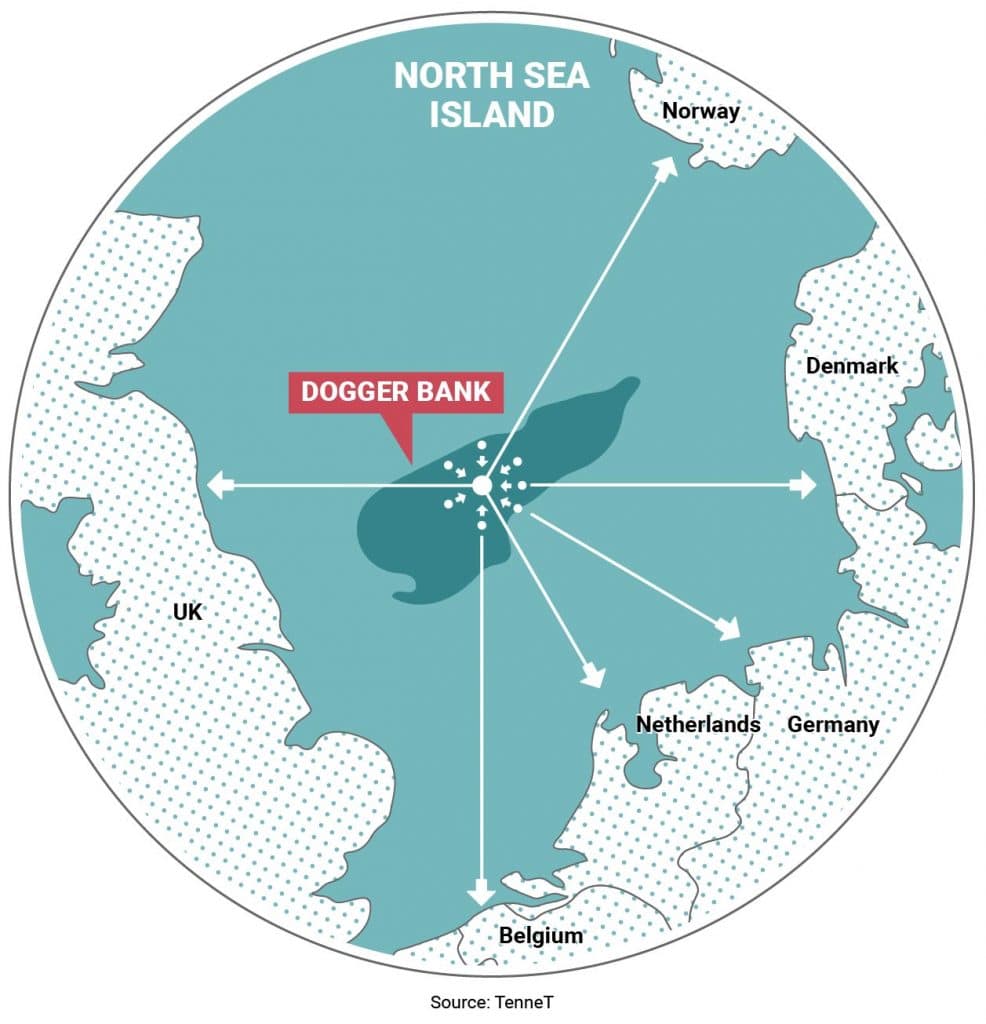
An artificial island created solely to produce energy; surrounded by an enormous wind power plant; an energy supply for 80 million people in six different countries.
This is the ambitious goal for the North Sea Wind Power Hub, a six-kilometre-square island being planned in the North Sea in a site located more or less directly between Great Britain, Norway and Holland.
The project is being led by Dutch-German energy company TenneT and Energinet of Denmark, who calculate that if the project is built it could generate up to 30 GW of renewable energy.
The size of the island is necessary to host the electricity plant, as well as the logistical and operational structures necessary for it to function. Basically, what would be built is an independent energy island that would not need to be serviced by maintenance ships and where the energy produced would be stored and then sent out to the land grids. A massive “energy pump” for all of Northern Europe.
From island to archipelago
TenneT and Energinet are already looking at a further evolution of the ambitious plan. In the future, the island should stretch out into an archipelago. The idea is to plant the wind mills in the not far from the island, so that they can exploit the power of the region’s violent winds. This archipelago of wind mills will make it possible to increase the generating capacity of the North Sea Hub to 100 GW. The project is futuristic to say the least, both in terms of vision and its completion time. The companies are already at work, but the island won’t be ready to go into operation until 2027. It must be created completely from scratch, moving tons of material as well as building ramparts that can protect the generation plant from the storms in the North Sea. In planners have picked their ideal location: Dogger Bank, 125 kilometres from the coast of East Yorkshire in England.

The project that paves the way for the future of wind power
The main difficulty facing the project comes from the archipelago’s position in the center of the North Sea. Generally, off shore wind farms are located not very far from the coast in order to make maintenance easier, an important consideration given that it can cost up to 20% of the generation price. Building a wind farm in the middle of the sea so far away from land will inevitably make maintenance costs soar. But the project’s creators say that even these high costs will be economically sustainable because of the large amount of energy produced and sold by the facility.
The North Sea Hub was presented as an economically viable project as well as the best road for the future of wind power.
«It’s crucial for industry to continue with the cost reduction path», Rob van der Hage, who manages TenneT’s offshore wind grid development programme, told The Guardian. «The big challenge we are facing towards 2030 and 2050 is onshore wind is hampered by local opposition and nearshore is nearly full. It’s logical we are looking at areas further offshore».
A revolution for wind power
Beyond the innovative aspects of its position and technical characteristics, the North Sea Hub will have a huge impact on wind-powered energy production. The North Sea is full of wind farms, all of them small and just a few kilometres from the coast.
The most productive offshore wind farm is currently the London Array, reaching 0.63 MW. The offshore wind production in Europe as a whole is about 13 GW.
The project will also have a significant impact and worldwide renewable energy production. China is currently the country that produces the most renewable energy. The International Energy Agency calculates that between 2017 and 2022 China will increase renewable capacity by 370 GW. The United States is next, with 120 GW of new production coming on line up to 2022, followed by Europe with 100 GW. If the North Sea Hub comes on line, its impact could be significant for Europe in terms of meeting its climate change goals, and in particular for the countries that will receive this new electricity: the UK, Belgium, the Netherlands, Germany, Denmark and Norway. For these six countries, the wind farm archipelago will be a chance to test this new energy source, which exploits the force of nature and harnesses it for the service of mankind.

